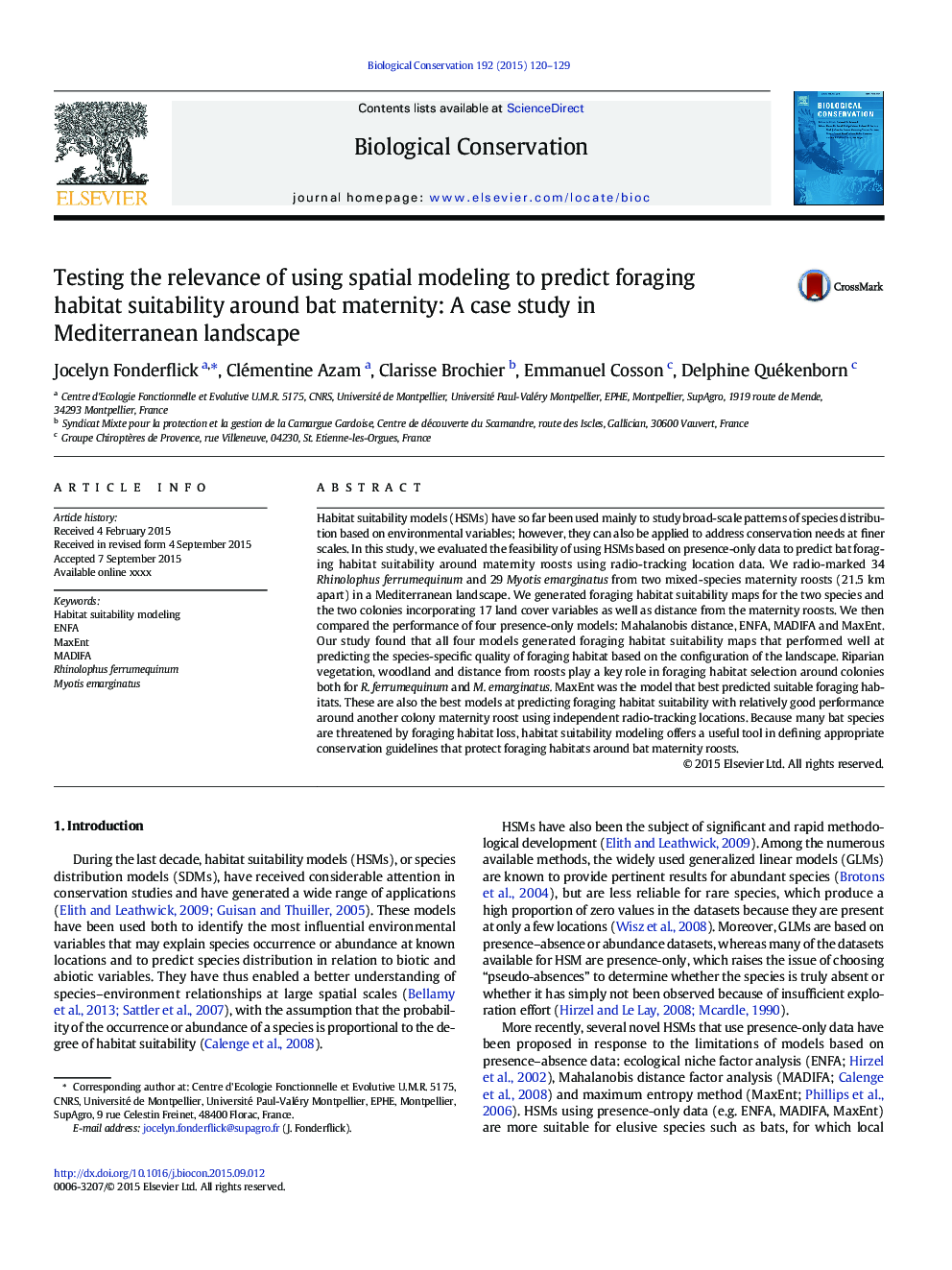| Article ID | Journal | Published Year | Pages | File Type |
|---|---|---|---|---|
| 6298558 | Biological Conservation | 2015 | 10 Pages |
Abstract
Habitat suitability models (HSMs) have so far been used mainly to study broad-scale patterns of species distribution based on environmental variables; however, they can also be applied to address conservation needs at finer scales. In this study, we evaluated the feasibility of using HSMs based on presence-only data to predict bat foraging habitat suitability around maternity roosts using radio-tracking location data. We radio-marked 34 Rhinolophus ferrumequinum and 29Â Myotis emarginatus from two mixed-species maternity roosts (21.5Â km apart) in a Mediterranean landscape. We generated foraging habitat suitability maps for the two species and the two colonies incorporating 17 land cover variables as well as distance from the maternity roosts. We then compared the performance of four presence-only models: Mahalanobis distance, ENFA, MADIFA and MaxEnt. Our study found that all four models generated foraging habitat suitability maps that performed well at predicting the species-specific quality of foraging habitat based on the configuration of the landscape. Riparian vegetation, woodland and distance from roosts play a key role in foraging habitat selection around colonies both for R. ferrumequinum and M. emarginatus. MaxEnt was the model that best predicted suitable foraging habitats. These are also the best models at predicting foraging habitat suitability with relatively good performance around another colony maternity roost using independent radio-tracking locations. Because many bat species are threatened by foraging habitat loss, habitat suitability modeling offers a useful tool in defining appropriate conservation guidelines that protect foraging habitats around bat maternity roosts.
Keywords
Related Topics
Life Sciences
Agricultural and Biological Sciences
Ecology, Evolution, Behavior and Systematics
Authors
Jocelyn Fonderflick, Clémentine Azam, Clarisse Brochier, Emmanuel Cosson, Delphine Quékenborn,
